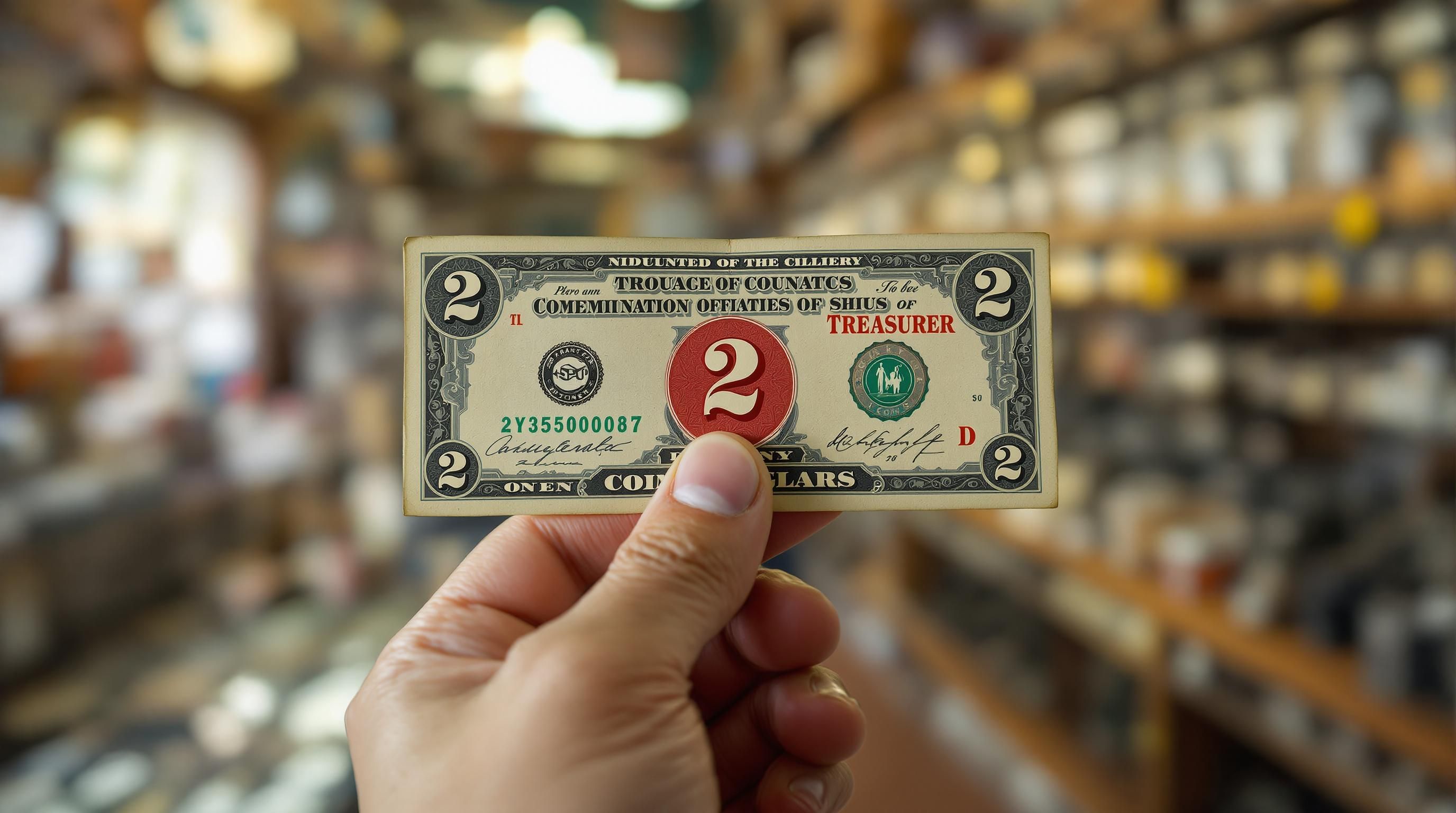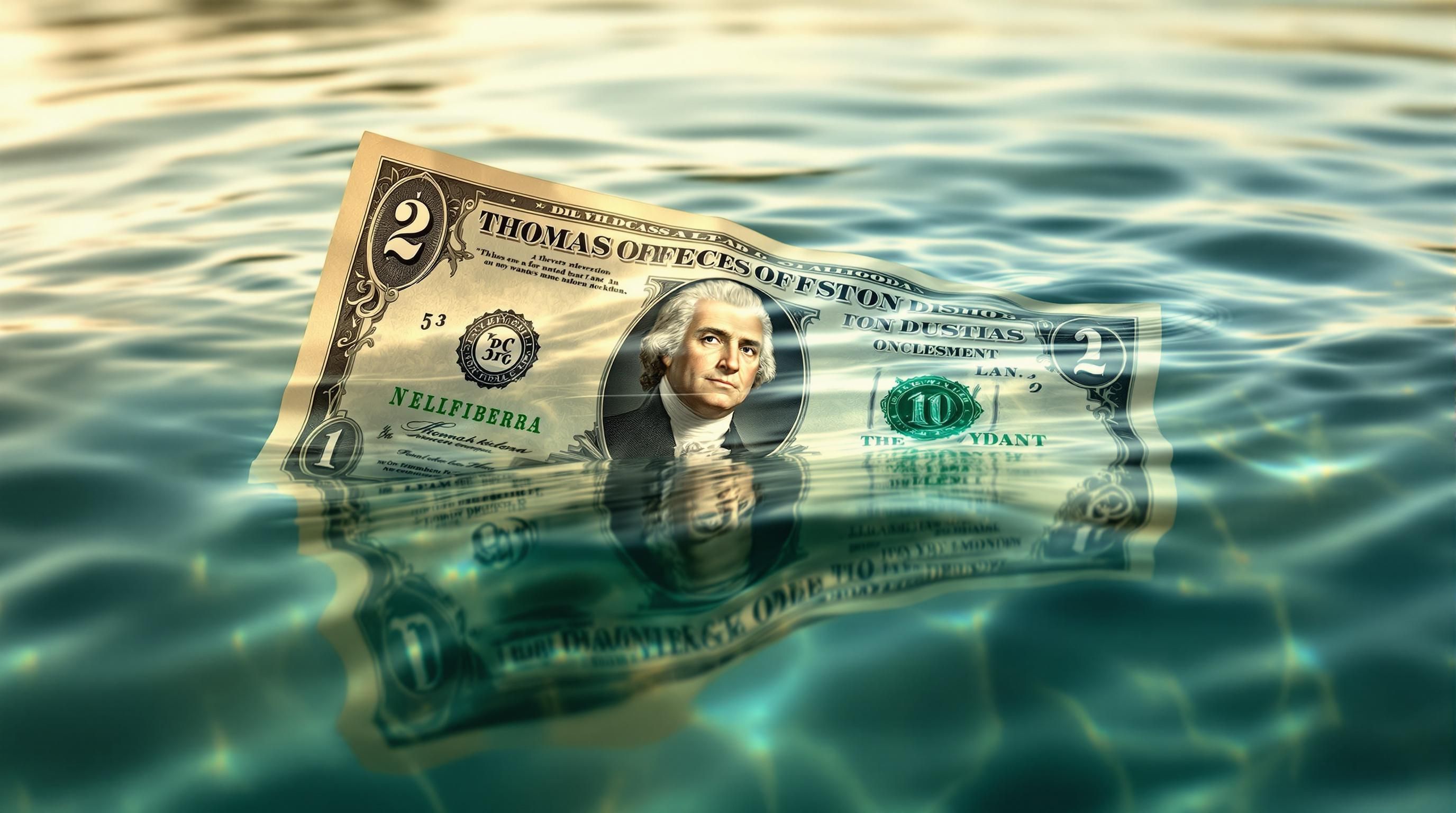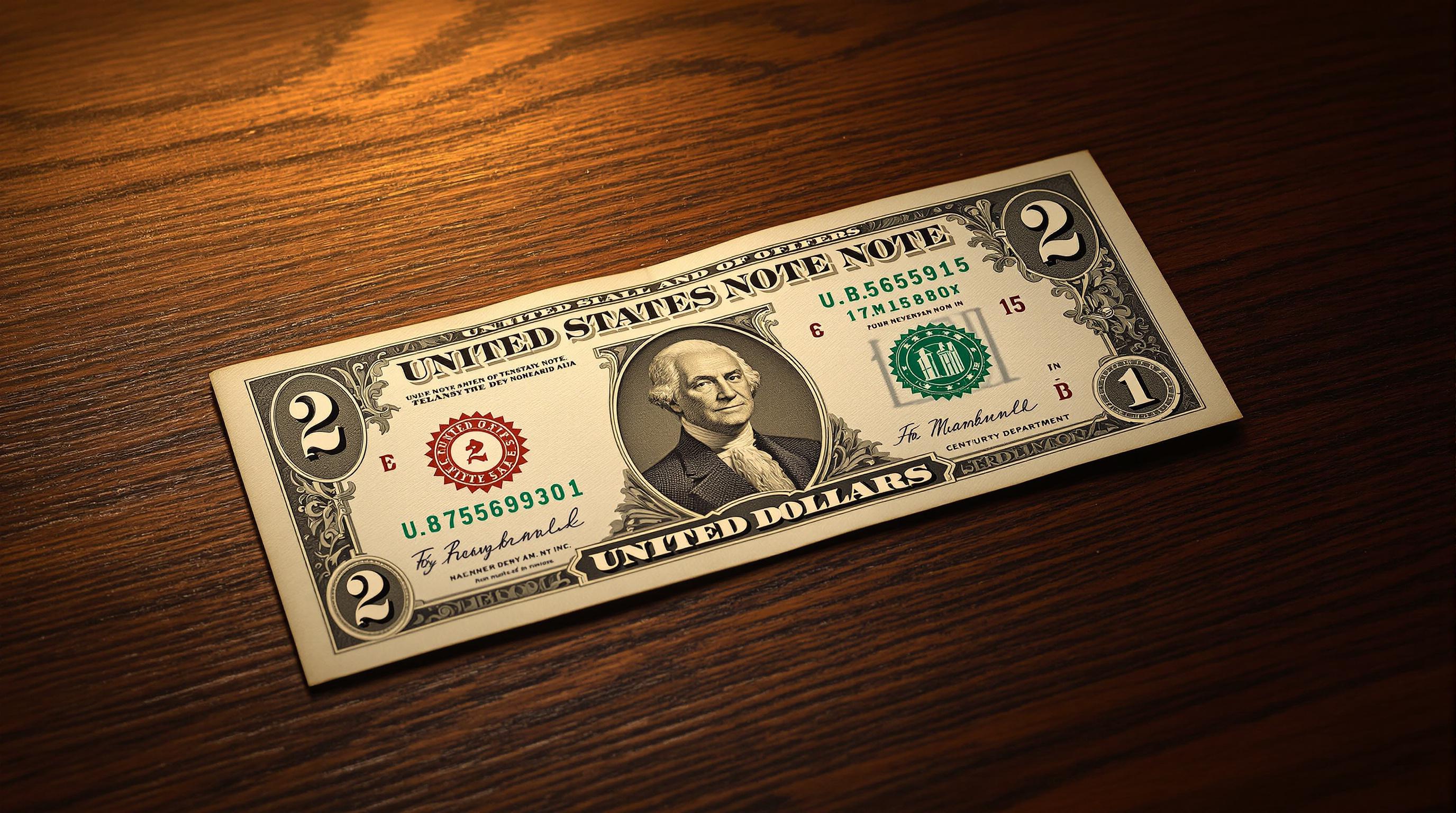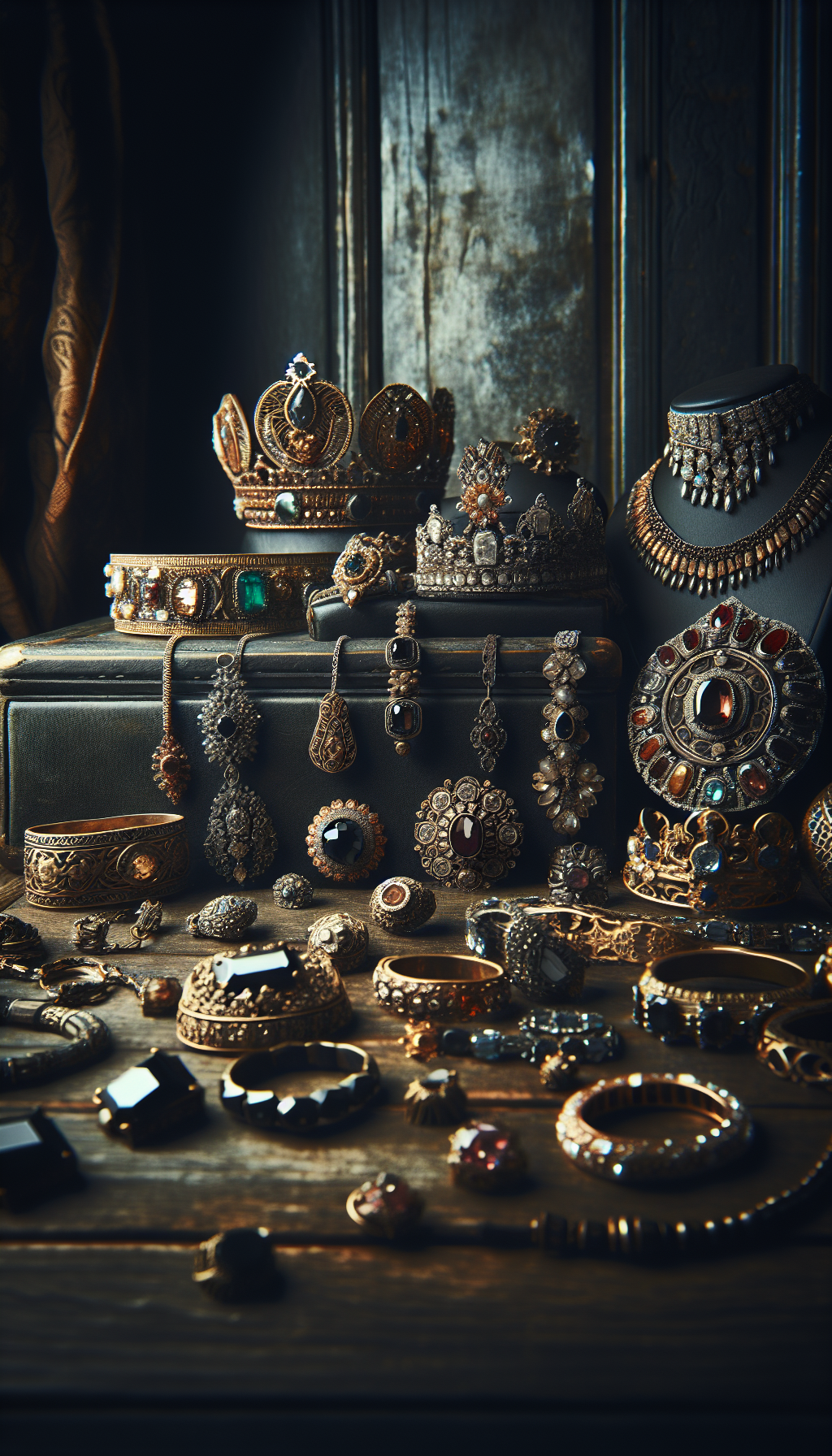Introduction to 1953 $2 Bills
Unlike modern $2 bills which feature green seals, the 1953 series showcases a vibrant red seal that immediately distinguishes it as a United States Note rather than a Federal Reserve Note. These bills were issued in three series: 1953, 1953A, and 1953B, each with its own characteristics and relative scarcity.
If you’ve recently discovered one of these notes in an old collection, family heirloom, or even tucked away in a forgotten wallet, you might be wondering about its value. In this comprehensive guide, we’ll explore what makes these bills collectible and what factors determine their worth in today’s market.
Current Market Value of 1953 $2 Bills
1953 $2 Bill Value Ranges
Current market values based on condition and series
</tbody>
</table>
For most circulated 1953 $2 bills, values typically range between $3 and $10, depending on condition. However, as noted by currency experts at Old Currency Values, uncirculated examples can fetch $12 to $25, with star notes commanding higher premiums.
Key Value Factors for 1953 $2 Bills
Condition Assessment for 1953 $2 Bills
Check applicable condition factors to determine potential value
- No folds or creases visible (Uncirculated)
- Crisp paper with original sheen
- Bright, unfaded red seal and serial numbers
- No stains, marks, or writing
- Sharp, well-centered printing
- All corners sharp and undamaged
- Original paper texture intact
Understanding 1953 $2 Bill Series and Variations
1953 $2 Bill Series Timeline
- 1953
Base Series
The original 1953 series (no letter suffix) featured signatures of Treasury Secretary George W. Humphrey and Treasurer of the United States Ivy Baker Priest. These were the first to be printed. - 1953A
First Modification
The 1953A series featured the signatures of Treasury Secretary Robert B. Anderson and Treasurer of the United States Ivy Baker Priest. This modification was introduced due to a change in the Treasury Secretary position. - 1953B
Final Variation
The 1953B series was the last of the 1953 $2 bill variations, featuring signatures of Treasury Secretary Robert B. Anderson and Treasurer of the United States Elizabeth Rudel Smith. This series is considered slightly scarcer than the previous variations. - 1963
Series End
The 1953 series was discontinued and replaced by the 1963 series of $2 bills, which continued the red seal United States Note design before the eventual transition to green seal Federal Reserve Notes in 1976.
Each series maintains the same basic design featuring Thomas Jefferson on the front and a reproduction of John Trumbull’s painting “Declaration of Independence” on the reverse. The detailed engraving work and distinctive red Treasury seal are hallmarks of these notes.
According to the price guide at US Currency Auctions, there are slight value differences between the series, with 1953B generally commanding slightly higher prices due to lower printing numbers.
Star Notes: The Premium Variation

Star notes from the 1953 series are significantly more valuable than regular notes due to their relative scarcity. According to currency experts:
- Circulated 1953 $2 star notes typically sell for about $5 to $15
- Uncirculated star notes can command prices from $25 to $75 or more
- Exceptionally well-preserved specimens with perfect centering may reach even higher values
As noted in an expert appraisal from JustAnswer, a typical 1953 red seal in average condition would be worth $5-10, but due to being a star note, the value jumps to around $15-25, highlighting the premium that star notes command.
Fancy Serial Numbers and Their Impact on Value
Fancy Serial Number Value Premium
Potential value increase based on serial number type
| Category | Price | Notes |
|---|---|---|
| 1953 (No Letter) | $2.25 - $5.00 | Circulated Condition |
| 1953 (No Letter) | $12.00 - $15.00 | Uncirculated Condition |
| 1953A | $2.25 - $5.00 | Circulated Condition |
| 1953A | $12.75 - $18.00 | Uncirculated Condition |
| 1953B | $2.75 - $5.50 | Circulated Condition |
| 1953B | $15.00 - $25.00 | Uncirculated Condition |
| 1953 Star Note (Any Series) | $5.00 - $15.00 | Circulated Condition |
| 1953 Star Note (Any Series) | $25.00 - $75.00+ | Uncirculated Condition |
</tbody>
</table>
According to a JustAnswer appraisal, a 1953 $2 bill with a fancy serial number can be quite rare and valuable to collectors who specialize in such notes, potentially increasing the value from a standard $10 to significantly more depending on the specific pattern.
When examining your 1953 $2 bill, pay special attention to the serial number. Even bills in circulated condition can be worth substantially more if they feature one of these desirable numerical patterns.
Condition Grading for 1953 $2 Bills

Condition Grades and Typical Values
1953 $2 bill values by grade (standard notes)
| Category | Price | Notes |
|---|---|---|
| Solid Number (e.g., 22222222) | $500 - $1,000+ | All digits the same |
| Ladder (e.g., 12345678) | $100 - $600+ | Sequential digits |
| Radar/Palindrome (e.g., 12344321) | $50 - $200+ | Reads the same forward and backward |
| Binary (e.g., 10101010) | $25 - $100+ | Only two different digits |
| Low Number (e.g., 00000123) | $20 - $150+ | Very small numbers or many leading zeros |
| Repeater (e.g., 12341234) | $20 - $100+ | Pattern repeats in sequence |
</tbody>
</table>
For accurate grading, consider these key factors:
- Creases and folds: The fewer, the better
- Ink brightness: Vibrant color indicates less circulation
- Paper quality: Crisp, firm paper suggests minimal handling
- Centering: Well-centered printing commands premium values
- Corner condition: Sharp corners indicate careful handling
- Stains or markings: Clean bills are worth more
Professional grading services like PCGS Currency or PMG (Paper Money Guaranty) can provide certified grades for valuable specimens, which can significantly increase both marketability and value for high-grade examples.
Where to Sell Your 1953 $2 Bills
Online Marketplaces
- eBay: The most popular platform for currency collectors with a wide audience
- Etsy: Growing marketplace for collectibles
- Facebook Marketplace: Good for local sales
Specialized Currency Dealers
- Local coin and currency shops
- Currency shows and conventions
- Online dealers who specialize in paper money
Auction Houses
- For extremely rare or valuable specimens
- Heritage Auctions and Stack’s Bowers are leading numismatic auctioneers
Collector Forums and Groups
- Paper Money Collectors Association
- American Numismatic Association
- Online collector communities
According to listings on eBay, 1953 $2 bills are regularly sold with asking prices ranging from under $10 for circulated examples to several hundred dollars for uncirculated specimens or those with special characteristics.
Authentication and Avoiding Counterfeits
Paper Quality: Genuine bills are printed on special paper with tiny red and blue fibers embedded throughout. This paper has a distinctive feel that’s difficult to replicate.
Printing Quality: Authentic notes feature fine-line engraving techniques that create a raised texture you can feel when running your finger across the surface.
Serial Numbers: Check that the serial numbers match in color and font style to the appropriate series.
Red Seal: The distinctive red Treasury seal should have clear, sharp details with proper coloration.
Portrait Detail: The Jefferson portrait should show fine detail in the hair and features.
Watermarks: Hold the bill up to light to check for proper watermarking (though these are subtle in older notes).
For valuable specimens, consider having the note authenticated by a professional grading service. They can verify authenticity while also providing a protective holder and official grade.
Common Questions About 1953 $2 Bills
How do I know if my $2 bill is valuable?
To determine if your $2 bill is valuable beyond its face value, check these key factors:
- Series date: 1953 red seal notes are collectible, with 1953B generally being the most valuable of the series
- Condition: Uncirculated bills are worth significantly more than circulated ones
- Serial number: Look for star notes (with a star in the serial number) or fancy serial numbers (sequential, repeating, or palindromic numbers)
- Printing errors: Misalignments, ink smears, or other printing mistakes can increase value
Even in circulated condition, most 1953 $2 bills are worth at least $3-5, with uncirculated examples starting around $12-15. For precise valuation, consider consulting a currency dealer or using a current price guide.
What makes a 1953 $2 bill worth more than face value?
Several factors increase the value of a 1953 $2 bill above its face value:
- Historical significance: As United States Notes (evidenced by the red seal), these bills represent a different monetary system than modern Federal Reserve Notes
- Age and scarcity: Being over 70 years old and no longer in circulation makes them increasingly harder to find
- Condition: Well-preserved specimens command premium prices, with uncirculated bills worth substantially more
- Star notes: Replacement notes with a star in the serial number are rarer and more valuable
- Serial number varieties: Fancy or interesting patterns in the serial numbers can significantly increase collector interest
- Series variation: The three variants (1953, 1953A, 1953B) have different relative scarcities
Collectors value these notes both for their historical importance and as part of complete collections of U.S. currency series.
How can I tell if my $2 bill is a star note?
To identify a star note in the 1953 $2 bill series:
- Examine the serial number on the face of the bill
- Look for a small star symbol (★) at either the beginning or end of the serial number
- On 1953 $2 bills specifically, the star will appear at the end of the serial number
- The star will be printed in the same red ink as the serial number itself
Star notes are replacement notes that were printed to substitute for bills damaged during the printing process. They are much rarer than regular notes from the same series, making them more valuable to collectors. A 1953 $2 star note in circulated condition might be worth $5-15, while uncirculated examples can fetch $25-75 or more.
What's the difference between 1953, 1953A, and 1953B $2 bills?
The main differences between the three 1953 series variations are:1953 (No Letter):
- Signatures: Treasury Secretary George W. Humphrey and Treasurer Ivy Baker Priest
- Generally worth $2.25-$5 in circulated condition, $12-$15 uncirculated
1953A:
- Signatures: Treasury Secretary Robert B. Anderson and Treasurer Ivy Baker Priest
- Generally worth $2.25-$5 in circulated condition, $12.75-$18 uncirculated
1953B:
- Signatures: Treasury Secretary Robert B. Anderson and Treasurer Elizabeth Rudel Smith
- Generally worth $2.75-$5.50 in circulated condition, $15-$25 uncirculated
- Considered slightly scarcer than the other variants
All three variations feature the same basic design with Thomas Jefferson on the front and the Declaration of Independence scene on the back, along with the distinctive red Treasury seal that identifies them as United States Notes rather than Federal Reserve Notes.
Where can I get my 1953 $2 bill professionally appraised?
For professional appraisal of your 1953 $2 bill, consider these options:
Professional Grading Services:
- Paper Money Guaranty (PMG)
- Professional Currency Dealers Association (PCDA)
- PCGS Currency
Currency Dealers:
- Local coin and currency shops (check reviews first)
- Currency shows and conventions
- National dealers with expertise in paper money
Auction Houses:
- Heritage Auctions
- Stack’s Bowers
- These typically focus on more valuable specimens
Online Options:
- JustAnswer has currency experts who can provide quick appraisals
- Online forums like the Paper Money Forum can offer community expertise
For bills that may have significant value (uncirculated, star notes, or fancy serial numbers), professional grading services offer the most authoritative assessment, though they charge fees ranging from $15-50 per note depending on the service and value.
External Resources for $2 Bill Collectors
US Currency Value Price Guide
Comprehensive price guide for $2 bills across different series and conditions, including detailed information about 1953 red seal notes.
Old Currency Values - 1953 Red Seal Two Dollar Bill
Detailed analysis of 1953 $2 bill values with specific focus on star notes and condition grading.
Paper Money Collectors Association
Organization dedicated to the study and collection of paper money with resources for collectors of all levels.
Professional Currency Dealers Association
Trade organization for currency dealers with dealer directory and authentication resources.
1953 Red Seal $2 Dollar Bill Video Guide
Comprehensive video guide to identifying and valuing 1953 red seal $2 bills with visual examples.
JustAnswer Currency Appraisals
Expert appraisal service for getting professional opinions on the value of your currency items.
Conclusion: Are 1953 $2 Bills a Good Investment?
For the average collector, 1953 $2 bills represent an affordable entry point into currency collecting. Their distinctive red seals and historical significance make them interesting conversation pieces and tangible connections to America’s monetary history.
The best investment potential lies in:
- Uncirculated specimens - Particularly those with perfect centering and crisp paper
- Star notes - Especially in uncirculated condition
- Fancy serial numbers - Solid numbers, ladders, and other patterns can significantly increase value
- Complete sets - Collections featuring all three series variations (1953, 1953A, 1953B)
If you own a 1953 $2 bill, its value likely exceeds its face value, even if only by a few dollars. For those with uncirculated examples or star notes, the premium can be more substantial. As with all collectibles, condition is paramount, and proper storage in archival-quality holders will help preserve your bill’s value over time.
Whether you’re considering selling your note or adding to your collection, understanding these valuation factors will help you make informed decisions about these fascinating pieces of American currency history.
Get a Professional Appraisal
Unsure about your item’s value? Our certified experts provide fast, written appraisals you can trust.
- Expert report with photos and comps
- Fast turnaround
- Fixed, upfront pricing
No obligation. Secure upload.
| Category | Price | Notes |
|---|---|---|
| Poor (P) | $2 - $3 | Heavily worn, may have tears or pieces missing |
| Fair (Fr) | $2 - $3 | Very worn with possible minor damage |
| Good (G) | $2.25 - $3.50 | Heavily circulated with multiple folds |
| Very Good (VG) | $3 - $4 | Significant wear but still sound |
| Fine (F) | $4 - $5 | Moderate circulation wear, some soiling |
| Very Fine (VF) | $5 - $8 | Light circulation, minor soiling |
| Extremely Fine (EF/XF) | $8 - $15 | Minimal circulation wear, good color |
| About Uncirculated (AU) | $12 - $20 | Almost no circulation evidence, possibly one fold |
| Uncirculated (Unc) | $15 - $30+ | No circulation wear, as issued from the bank |
| Gem Uncirculated | $30 - $75+ | Perfect condition with ideal centering |




